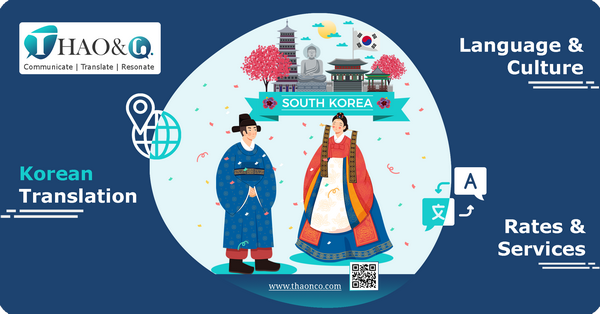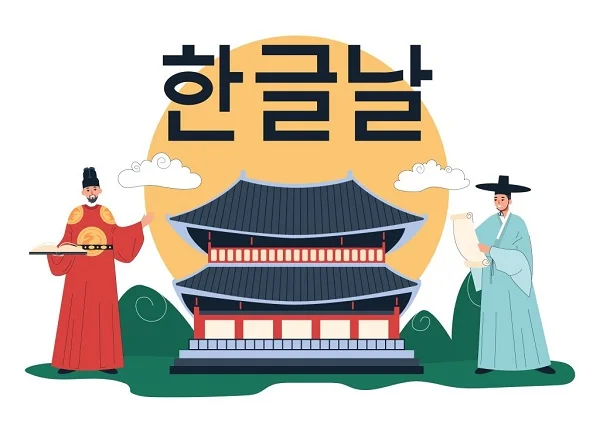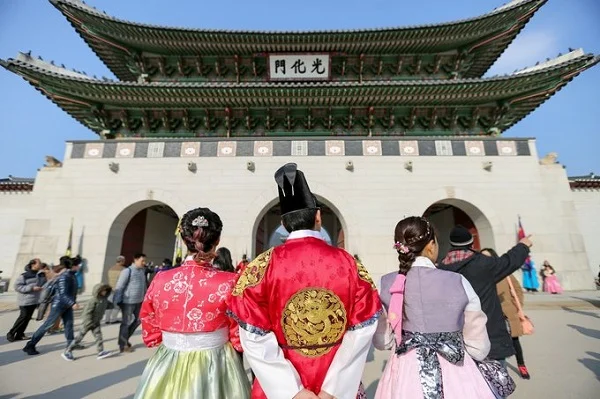Korean is a beautiful language, akin to a precious treasure created from unique and distinct vowels and consonants. For that reason, Korean translation can feel like a journey to explore the special characteristics of this language.
In the journey of discovering such beauty, translators may face many obstacles and difficulties in providing the most seamless and high-quality translations. So, what makes Korean translation special? Read on to find out interesting facts about the Korean language and Korean translation!
The dawn and development of the Korean language is an interesting topic that many people are intrigued by. Delving into its origins is a way to understand more about this language.
The Korean alphabet is called “Hangeul” or “Hangul” in South Korea and “Chosŏn’gŭl” in North Korea. This alphabet was created by King Sejong the Great, the fourth king of the Joseon Dynasty in 1443.
Before the advent of Hangul, the people of South Korea used borrowed characters from Chinese (known as Hanja) alongside various native writing systems. However, the complexity of the Hanja characters made it difficult for the lower classes of society at that time to read and write. Thus, King Sejong personally researched and introduced a new, simpler alphabet with the aim of making it accessible to many people.

For Koreans, Hangul is an essential part of their national pride and identity. This is why the Korean people specially designate October 9th as “한글날” (Hangulnal) every year to commemorate the birth of Hangul – a national treasure of South Korea.
Today, the Korean language is almost perfect in every aspect. While the initial purpose of creating the alphabet was to make reading, writing, and overall literacy more feasible, the unique features of the language also present many challenges for translators.
At first glance, Hangul looks like a system of ideographic characters, but it is actually a phonogram or phonetic script, where each written character represents a syllable or a sound.
Modern Hangul orthography uses 24 basic letters comprising 14 consonants and 10 vowels. Consonants often have curved or angular shapes to represent their pronunciation, while vowels have straight or vertical shapes with short lines on both sides to convey the concept of Yin and Yang in Eastern philosophy.
The structure of the Hangul alphabet is designed to combine consonants and vowels into different syllables, creating beautiful square letter blocks. Each such block can contain one or more consonants combined with a vowel, representing a syllable in the Korean language.
With the unique combination of vowels and consonants, the Korean language has approximately 1,149,538 words (Woori Mal Saem Dictionary, 2017). Compared to the number of words in English (according to the Oxford Dictionary), Korean has over 300,000 more words. This indicates that translating Korean into English can be challenging because not all words have equivalent meanings in English. In such cases, translators must find appropriate alternative expressions to create high-quality Korean translations.

One of the things that makes Korean translation particularly challenging is its unique sentence structures. Basic Korean sentences follow the order of “Subject – Object – Verb“. Moreover, Koreans often omit the subject in daily communication or when the context is clear, while still conveying the intended meaning of the sentence. This is a significant difference from the English sentence structure, which follows “Subject – Verb – Object.”
An example of this difference can be seen in the common English sentence “I love you,” where “I” is the subject, “love” is the verb, and “you” is the object. However, in Korean, the equivalent sentence “나는 너를 사랑해” (Naneun neoreul saranghae) follows the structure with “나는” (naneun) as the subject, “너를” (neoreul) as the object, and “사랑해” (saranghae) at the end as the object.
In fact, Koreans rarely use the complete sentence “나는 너를 사랑해” (Naneun neoreul saranghae) in communication because using both subject and object in the sentence can make the conversation sound unnatural. They only use a sentence with both subject and object when they want to emphasize these elements in the conversation. Instead, Koreans often use the shortened form “사랑해” (saranghae) to convey a sense of intimacy and closeness when expressing their love. This difference can be confusing for some translators who are not familiar with the sentence structure and usage in Korean.
In addition, verbs in the Korean language always appear at the end of a sentence and convey the main information of it. Therefore, apart from the verb, other elements in a Korean sentence can be omitted if the context is clear. To properly express information, Korean people often use complex sentence structures that include multiple subordinate clauses.
These characteristics of the Korean language make it challenging to produce natural translations. When translating Korean, linguists need to have a firm grasp of grammatical structure, the context of a sentence, or an entire passage or document to produce accurate and high-quality translations.
The Korean language has one of the most complex grammatical systems in the world. This complexity is a result of a diverse system of verbs expressed through various aspects, tenses, modes, scopes, and different types of verbs, along with the intricate structure of sentences, consisting of numerous supplementary components.
Additionally, complex pronunciation rules in Korean require translators to have a strong grasp of grammar and context for precise translation. Korean pronunciation includes a range of rules such as sound linking, tensification, nasalization, vowel harmony, simplification, and aspiration.
With numerous grammatical rules, expressions in the Korean language are logical and coherent with high precision. Therefore, successfully translating Korean becomes a challenging journey where the translator deciphers the meanings behind each character.

One common feature of Asian languages is the use of an honorific system to reflect social hierarchy and show respect for different communication partners. Honorifics are an essential part of daily communication and a cultural norm in Korean. The Korean honorifics system can be divided into three main types:
Korean honorifics are not only flexible in the transformation of suffixes and verb endings but also in changing word forms to suit the entire sentence. With the complexity of the honorific system, the Korean language allows for subtle and profound expressions in every word.
It is evident that the honorific system reflects a deep cultural respect for elders in Korean society. However, it can pose significant challenges for Korean translators.
When translating Korean into languages that have a similar honorific system, such as Japanese and Chinese, the translation process is relatively straightforward. However, when translating Korean into languages that lack equivalent vocabulary for the Korean honorific system, like English or French, choosing the appropriate expression to convey accurate information and the spirit of the original can be extremely difficult. Without careful consideration, a translation can lose the cultural nuances inherent in the source text.
In the Korean language, pronouns are incredibly diverse and serve to express various nuances in relationships. Depending on factors such as the intimacy of the relationship, social status, age, and experience, different pronouns may be used appropriately in the context of communication. Therefore, Korean pronouns are not merely a means of effective communication but also repositories of precious cultural values, such as traditions of respecting elders and a sense of community.
In Korean translation, the correct translation of personal pronouns is a matter of great concern. A slight mistranslation of a pronoun can convey an entirely different nuance and emotion compared to the original text.
For example, in English, the pronoun “I” can be used in all communication contexts. However, in Korean, there are many pronouns that can all be translated as “I,” but each carries a different emotional nuance, and even shortened forms of a pronoun can have entirely different meanings.
Accordingly, Korean people often use “나는” (naneun) and “저는” (choneun) to refer to “I”. Although they may have similar meanings, these words are used in different communication contexts. “나는” (naeun) is used in intimate communication situations, such as talking with friends, family, or people of similar age. On the other hand, “저는” (choneun) is used in more formal communication contexts with less familiar acquaintances or elders to demonstrate respect.
The way Koreans express their position, attitude, and intimacy with others in communication is subtle and profound. However, translating these nuances into English can be a demanding task. Therefore, for professional Korean translation, linguists must choose expressions that are suitable for the context of the original text.
Apart from one-of-a-kind linguistic features, Korean culture exerts considerable influence on Korean Translation. From traditional values deftly integrated into entertainment products to contemporary modern views, translators are required to constantly update their knowledge of Korean culture and current trends.
Given the country’s rapid strides in all sectors, translators and interpreters of the Korean language must not falter even for a moment in learning and submerging themselves into Korean culture. Only when translators and interpreters are armed with sufficient background knowledge of Korea, its traditions, culture, and people can the finest and most contextually appropriate translations be produced.
The exceptional progress South Korea has made in various fields in recent years is the result of a combination of many elements, including economics, politics, and entertainment. To achieve global influence, Korean translation is one of the key factors.
South Korea’s massive entertainment industry is not simply a tool for promoting culture but a multi-billion-dollar industry contributing significantly to the country’s economic growth.
From K-pop to K-drama, the appeal of South Korean entertainment is enormous on a global scale. However, for successful global outreach to potential audiences, Korean translation is essential. Additionally, effective global marketing strategies are crucial to maintain excitement in the entertainment industry. At this point, Korean translation can eliminate language barriers in marketing content, motion pictures, videos, or messages, enabling marketing strategies to be effective worldwide.
For many decades, technology has always been the leading edge of South Korea’s industries. Leading Korean tech giants like SK Telecom, Kakao, and Naver have impressed the world with cutting-edge technologies in various domains.
Korean translation in this field is considered a “lucrative land.” Through translation and localization, technical products like software, apps, and websites become highly compatible with local users in each respective country.
The South Korean manufacturing sector has long been famous for producing high-quality products. With significant competitive advantages, South Korean manufacturing companies have ventured into many new potential markets. An increasing number of local companies have established manufacturing plants in various countries within the region such as Samsung, LG, and Hyundai Motors, to name a few.
Korean translation now plays a crucial role in translating technical documents or conducting technical interpretation, ensuring that local companies understand the manufacturing processes of Korean companies.
South Korea excels in healthcare and beauty worldwide. Many businesses in this country invest heavily in research, product development, and services related to healthcare and beauty. Therefore, South Korea leads the world in top modern beauty technologies such as stem cell technology, cosmetic surgery, and laser technology.
The health and beauty industry in South Korea attracts considerable attention from other countries worldwide. This creates a significant demand for specialized translation services for documents related to this field. For these documents, translators need to possess a strong understanding of specialized knowledge and industry terms to provide the most accurate translations.
South Korea’s tourism industry is a significant global attraction due to its unique cultural aspects. In 2019, the country’s tourism industry contributed a remarkable 8.3% to the national GDP.
What makes the travel and tourism industry of South Korea successful? The success of South Korea’s tourism industry primarily stems from the promotion of its cultural identity through various media and excellent TV shows. Korean translation plays a vital role in making these strategies successful.

Korean translation rates are not fixed and depend on various factors. There is no specific or accurate pricing scale for these translation services, but you can consider the following influential factors:
Prior to initiating the translation project, it is essential to discuss with your chosen translation agency any special requirements or complementary services. This helps enhance the quality and avoid incurring additional costs in the translation process.
At Thao & Co., a professional translation agency, we will swiftly provide a detailed quote before commencing your project. When working with Thao & Co., you can rest assured that translation rates are always transparent and upfront.
Translation plays a crucial role in various fields. Therefore, choosing a professional Korean translation service is a matter of utmost importance for businesses. But how can you select a reputable Korean translation service provider that guarantees quality?
To create a high-quality and professional translation, the translation agency should meet requirements for linguist quality, translation technology, effective workflow, and extensive experience in similar projects.
With many years of experience in Korean translation projects, Thao & Co. is committed to offering you professional and high-quality Korean translation services. We employ modern translation technologies, paired with an efficient and optimized workflow to ensure that you receive professional and accurate Korean translations.
You can visit our Get a Quote page to connect with Thao & Co., or go to Thaonco.com to find detailed information about our services!